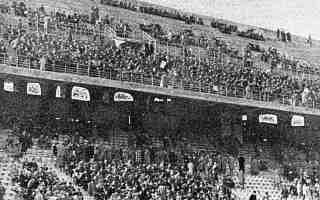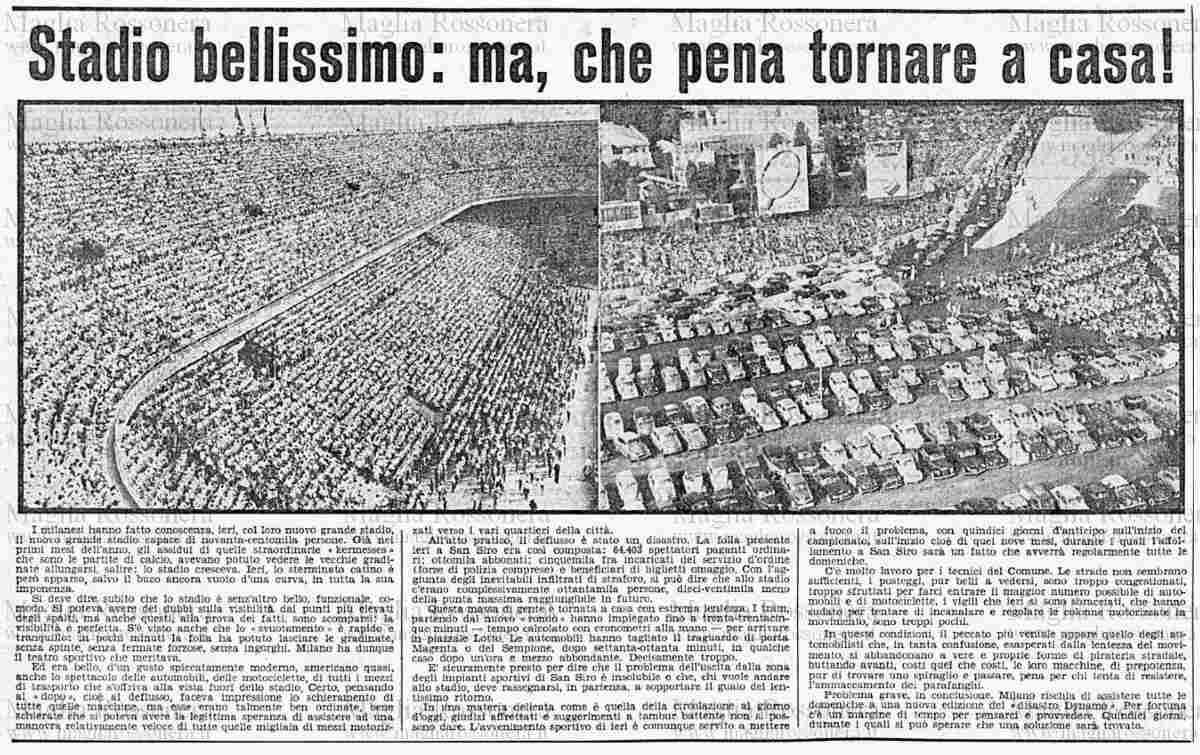Italy: Photo from 1955 that could save San Siro
source: StadiumDB.com; author: Jakub Ducki
 An archival photograph from 1955 challenges the official completion date of San Siro’s second ring. If the stands were already in use earlier, the stadium may already meet the legal criteria for heritage protection – potentially derailing plans for its sale and demolition.
An archival photograph from 1955 challenges the official completion date of San Siro’s second ring. If the stands were already in use earlier, the stadium may already meet the legal criteria for heritage protection – potentially derailing plans for its sale and demolition.
Advertisement
Photograph that could change everything
San Siro’s second tier, added in the 1950s, is once again at the center of a preservation debate. The controversy over its official completion date has taken a new turn following the emergence of an archival photograph from a match between Inter Milan and Fiorentina, played on January 23, 1955. The image, published two days later in Corriere d’informazione, shows fans seated in the newly constructed upper stands. The caption leaves no room for doubt: The public occupied the new stands.
This challenges the official version upheld by city authorities and heritage officials, who claim the works were completed in November 1955 — a timeline that would delay the eligibility for heritage status, which is granted to structures 70 years after completion.
The match report, written by renowned author Achille Campanile, states: Looking from the covered stands, one could see some empty sections among the regular seats, but not due to a lack of spectators. This time, the crowd wasn’t just in front of us — they were above us as well: the stands built atop the roofed sections were now in use; above us sat several thousand spectators. It added to the atmosphere — for those above and below.
The account makes it clear that the new section of the stadium was already operational in January 1955, suggesting that the main construction work must have been completed several months earlier.

Why is official date still November 1955?
Both Milan’s heritage office (Sovrintendenza) and the City of Milan recognize November 10, 1955 as the official completion date — the day of formal inspection and acceptance of the works. On this basis, both institutions assert that the 70-year threshold for automatic heritage protection will not be reached until November 2025.
However, critics argue this interpretation is too literal. The Sì Meazza
committee, led by former deputy mayor Luigi Corbani, emphasizes the need to understand completion
in architectural and functional terms. In their view, the key factor is that by January 1955, the stadium had already acquired its essential structural and morphological features — making it a fully functional whole.
What does law say?
Italian law clearly states that publicly owned structures completed at least 70 years ago, and of historical or architectural value, automatically qualify for conservation status. This protection applies by default unless the Ministry of Culture formally waives it.
If, however, San Siro had already been sold — for example, jointly to Inter and AC Milan — then a separate decision would be needed to grant protective status, based on the cultural and symbolic value of the stadium.
Race against time to sell San Siro
Amid mounting uncertainty, the City of Milan is rushing to finalize the sale of Stadio Giuseppe Meazza. The clubs, eager to build a new venue, seek full ownership to control the site’s future — which would likely include demolishing the iconic stadium.
Opponents of the sale, led by the Sì Meazza
committee, warn that if the stadium already meets the criteria for protection, it is legally unsellable. In their view, any sale would be both unlawful and invalid under national heritage law. Their argument is simple: protection applies from the moment a structure meets the legal requirements — not from when the authorities officially recognize it.
Advertisement

 StadiumDB
StadiumDB